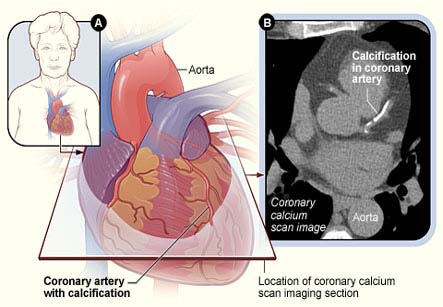Cardiac CT
Introduction
A computed tomography (CT) scan of the heart is an imaging study that uses x-rays to create detailed pictures of the heart and related major blood vessels.
There are three main types of CT scan which are applicable or useful to study the cardiac structure, functions and abnormalities if any. They include:
1. A coronary calcium scan – The CT scan is done to see if there is a buildup of calcium in the heart wall or the arteries.
2. CT angiography – this is done to look at the arteries that bring blood to the heart, also called as coronary angiography.
3. Total body CT scan – in the heart, the total body scan can detect aortic aneurysm and calcium in the plaques of coronary arteries. This method can help in early detection and treatment of potential cardiac problems.
Iran is among the top 10 countries in treating cardiovascular diseases, while it ranks first in the Middle East

Procedure:
• The patient is asked to lie on a narrow table that slides into the center of the CT scanner. The patient lies on the back with the head and feet outside the scanner on either end.
• Small patches, called electrodes are put on the chest for monitoring of ECG.
• Once inside the scanner, the X-ray beam of the machine rotates around the patient. (Modern “spiral” scanners can perform the examination without stopping.)
• A computer creates separate images of the body area to be scanned in various planes, called slices. These images can be stored or viewed on a monitor as well as can be printed or cut into a CD-ROM. Three-dimensional models of the heart can be created by stacking the slices together.
• The patient must be still during the exam, as the movements can cause blurring of images. The patient is told to hold the breath for short periods of time.
• The entire scan should only take about 10 minutes. Additional time may be required if contrast enhanced CT scan is to be taken.
Preparation:
• Certain CT exams require a special dye, called as contrast. The contrast dye is radio-opaque and is delivered into the body by intravenous route before the test starts. Contrast helps certain areas to show up better on the x-rays.
• Contrast can be given through a vein in the hand or forearm. If contrast is used, the patient is instructed not to eat or drink anything for at least 4-6 hours before the test.
• The doctor should be informed if you have ever had a reaction to contrast.
• Before receiving the contrast, the doctor must be told if you take diabetes medication called metformin as in that case, extra precautions need to be taken.
• The patient is asked to remove jewelry and wear a hospital gown during the study.
Indications:
CT rapidly creates detailed pictures of the heart and its arteries. The test may be used to diagnose:
1. Plaque build-up in the coronary arteries which can predict the risk for heart disease
2. Congenital heart disease (heart problems present since birth)
3. Valvular heart disease (problems with the heart valves)
4. Blockage in the coronary arteries that supply the heart
5. Tumors of the heart
6. Inflammation of the covering around the heart (pericarditis)
Normal Results:
Results are considered normal if the heart and arteries being examined are normal in appearance.
The doctor can use the results of this test to determine the calcium score. The score is based on the amount of calcium found in the arteries of the heart. The test is normal or negative if the calcium score is 0.This means the possibility of having a heart attack over the next 2 to 5 years is very low. If the calcium score is very low, the coronary artery disease is unlikely.
Risks of CT scans include:
1. Exposure to radiation – CT scan causes more exposure to radiation than regular X-rays. Having many CT scans can increase the risk of cancer.
2. Problems with the contrast dye:
• The most common type of contrast given into a vein contains iodine. Allergy to iodine can cause nausea or vomiting, sneezing, itching, or hives. If there is absolute need of contrast in such cases, then antihistamines or steroids are given before the test.
• The contrast is removed from body through kidneys. In diabetics or kidney disease patients, extra fluids are given after the test to help flush the iodine out of the body.
• Rarely, the dye may cause a life-threatening allergic response called as anaphylaxis. If there are any problems in breathing during the test, this should be notified to the scan operator immediately. Scanners come with an intercom and speakers, so the operator can hear the patient at all times.
Contraindications to CT scan:
CT scan should be avoided if you are or might be pregnant and if the patient is already undergoing extensive radiotherapy for cancer treatment.